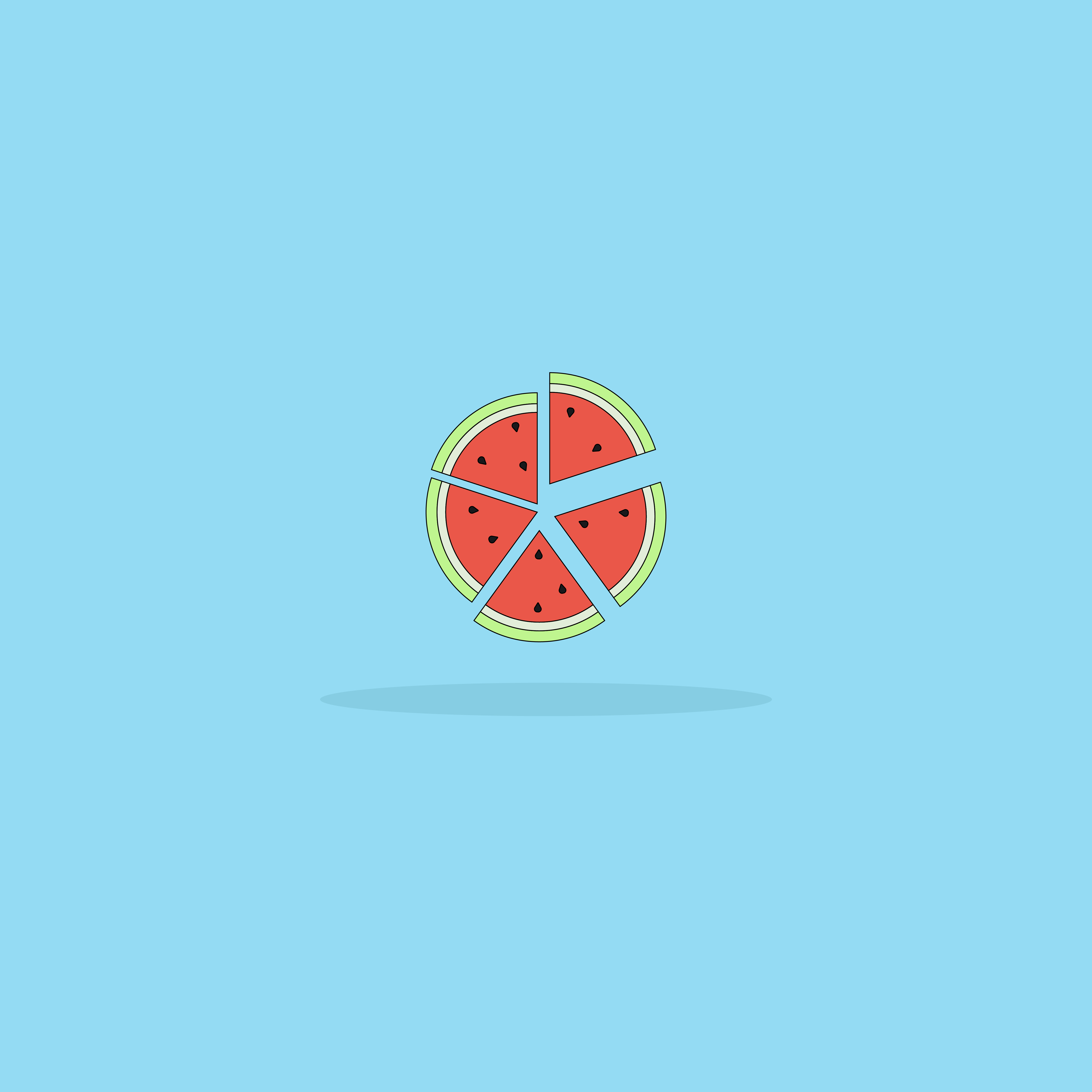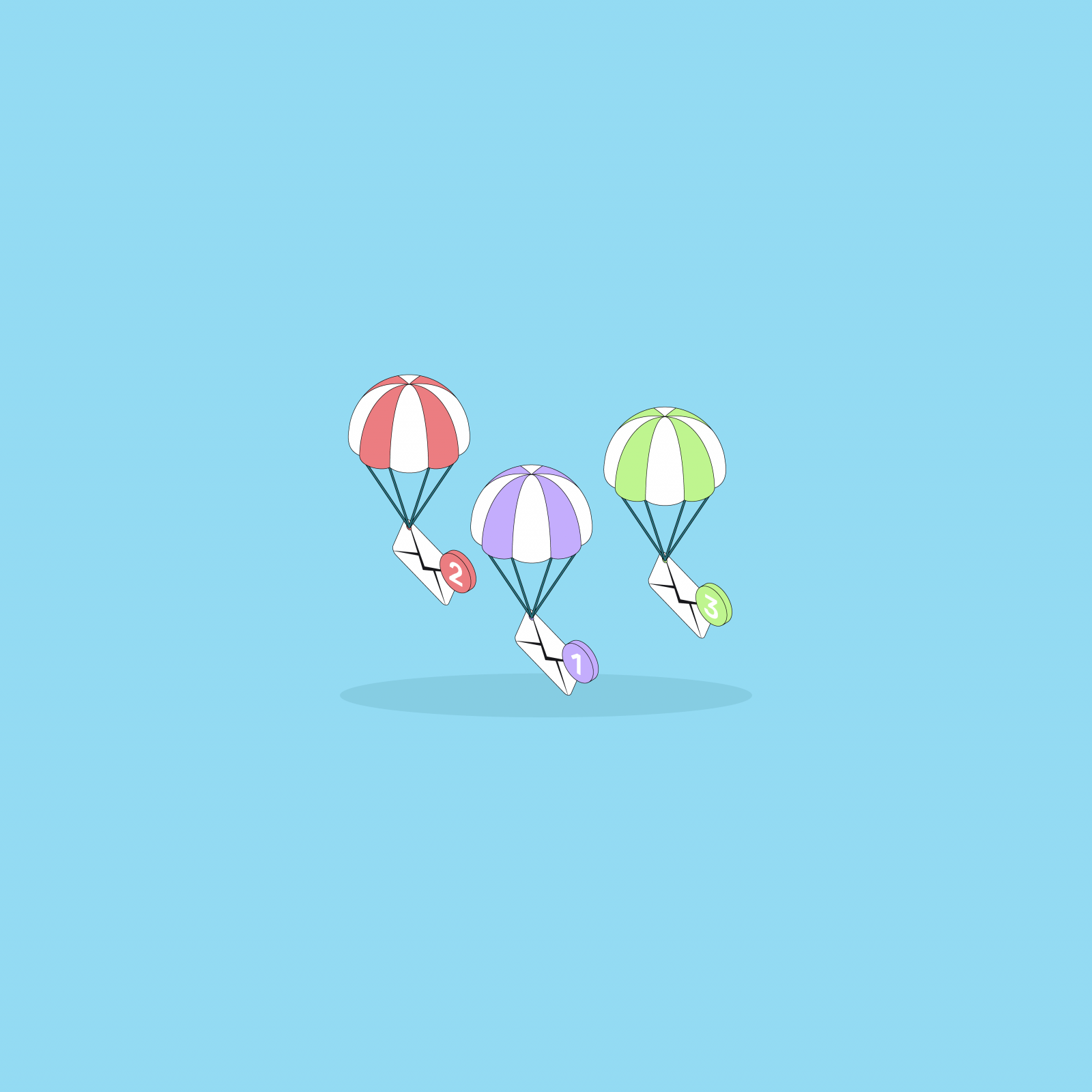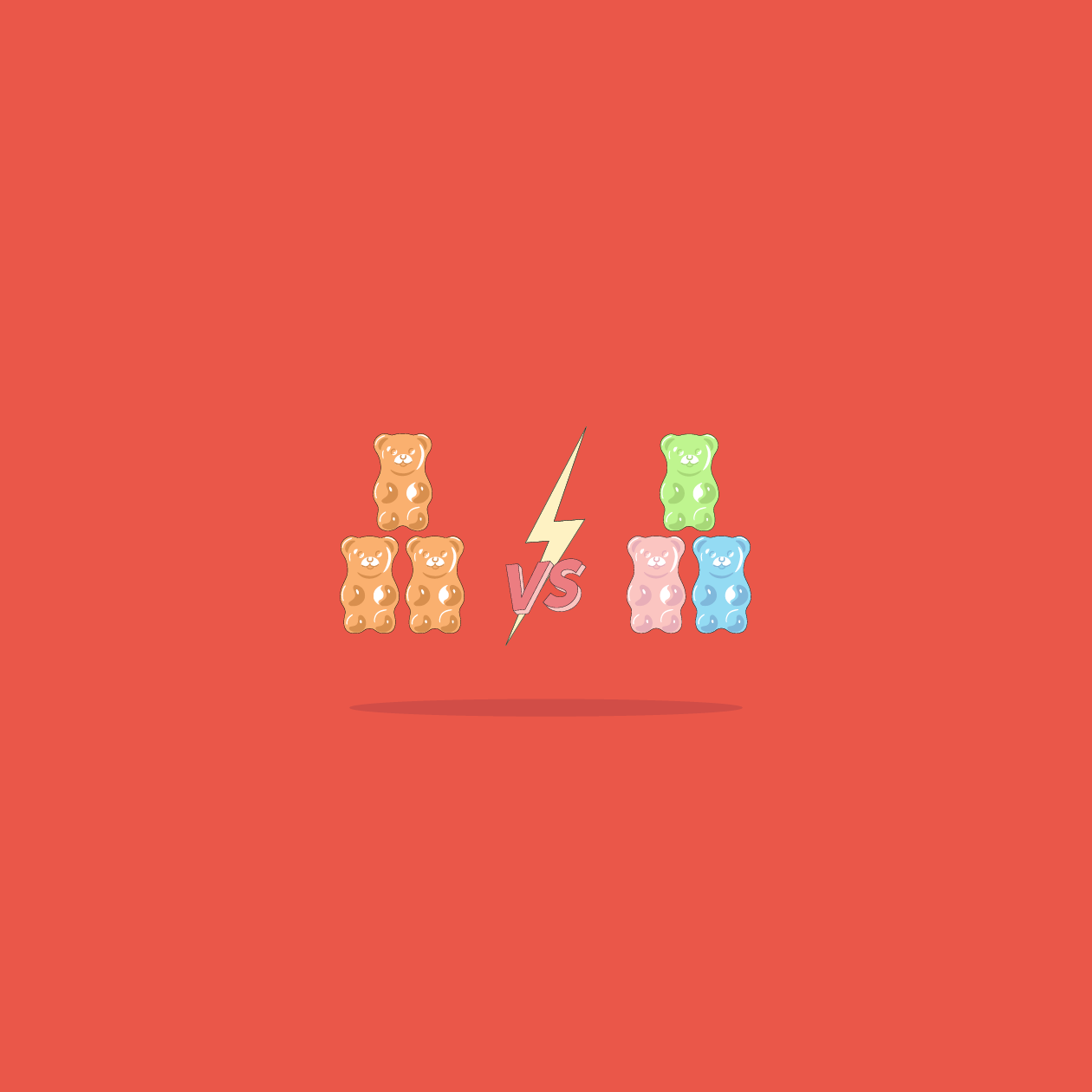Our websites use cookies. By continuing, we assume your permission to deploy cookies as detailed in our Privacy Policy.
10 Types of Online Shoppers and How to Convert Them
Having been over what behavioural segmentation is, its benefits, and the 5 most important behavioural segmentation examples every marketer should know, it is now time to get to know the types of online shoppers you’ll encounter and how to convert them.
This, dear marketer, is how behavioural segmentation helps you—by letting you get to know customer types intimately.
This article will introduce you to the types of online shoppers you’ll encounter out there in the wild wild web (and the Segmentify dashboard), explain their most prominent characteristics and tell you all about the best ways to convert them.

Stop generic marketing in its tracks with customer segmentation; download the FREE playbook.
1. Active Loyals
Active loyals are the backbone of your customer base, regularly making purchases from your online store. In other words, they are your ideal customer segment.
Characteristics of Active Loyals
- Regular customers: Active loyals frequently and regularly visit your website or use your app. They are familiar with your products and services and have placed multiple orders from you.
- High trust level: Their previous experiences have left positive impressions, establishing trust in your brand.
- Highly engaged customers: Active loyals are more likely to open your emails, follow you on social media, and join loyalty programs. They actively engage with your brand beyond just making purchases.
How to Best Target and Convert Active Loyals
- Loyalty programs: Implement and promote a loyalty program that offers exclusive discounts or early access to sales to active loyals.
- Personalised recommendations: Leverage their purchase history and browsing behaviour to provide personalised recommendations. This increases the chances of them finding the products they want and making additional purchases.
- Exclusive previews: Provide active loyals with sneak peeks of upcoming product launches or sales. Make them feel special by granting them early access to instigate their interest.
2. Big Spenders
Big spenders, often referred to as high-value customers, are the crown jewels of any online business. These customers consistently make substantial purchases, and their willingness to spend more sets them apart from the average shopper.
Characteristics of Big Spenders
- High order value: Big spenders consistently place orders with a high monetary value, often spending significantly more than the average customer.
- Frequent purchases: They don’t just make large one-time purchases; they return to your website or app regularly, maintaining a steady flow of orders.
- Large baskets: Big spenders tend to fill their shopping carts with multiple items, making each transaction a substantial investment.
- Appreciate quality: These customers are discerning and value quality over price. They are willing to pay a premium for top-notch products and exceptional service.
How to Best Target and Convert Big Spenders
- Cross-selling and upselling: Capitalise on their propensity to purchase by suggesting complementary products or upgrades. Highlight the added value they can receive by considering related items or higher-end alternatives.
- Loyalty program: Implement a tiered loyalty program that offers escalating rewards based on their spending levels. This can include cashback, gift cards, or exclusive access to limited-edition products.
- Engagement and feedback: Actively engage with big spenders through surveys, feedback forms, and personalised thank-you notes. Show them you value their opinions and are committed to meeting their expectations.
3. Loyals at Risk
Loyals at risk represent a unique challenge for online retailers. These customers have shown loyalty to your brand in the past, but their recent inactivity raises concerns about their continued patronage.
Characteristics of Loyals at Risk
- Previously loyal: They have a history of making multiple purchases from you, which indicates a level of trust and appreciation for your brand.
- Recent inactivity: It has been a while since they have made a purchase, and their engagement with your brand has dwindled. They may have temporarily switched to competitors or lost interest.
- Potentially interested: Since they were once loyal customers, they will likely still be interested in your products or services.
How to Best Target and Convert Loyals at Risk
- Segment and prioritise: Analyse your loyals at-risk segment to identify those with the highest potential for re-engagement. Focus your efforts on this group with more aggressive retargeting strategies.
- Email marketing: Implement personalised reactivation email campaigns specifically tailored to this segment. Remind them of their past positive experiences with your brand.
- Retargeting ads: Utilise retargeting ads on platforms like Facebook and Google to display relevant products or promotions to these customers when they browse the internet.
4. Churn Candidates
Churn candidates, despite having made purchases in the past, have gone an extended period without engaging with your online store.
Characteristics of Churn Candidates
- Previously interested: Churn candidates have a history of making purchases from your online store, indicating that they were once interested in your brand.
- Extended inactivity: These customers have refrained from making any purchases for a significant amount of time, which differs based on industry and company.
- Fading engagement: Their engagement with your brand, such as opening emails, clicking on ads, or visiting your website/app, has sharply declined or ceased altogether.
How to Best Target and Convert Churn Candidates
- Reactivation campaigns: Similar to loyalty at-risk customers, design personalised email campaigns tailored to churn candidates. Highlight the value of your products or services, and offer incentives or discounts for their return.
- Timing and frequency: Be strategic in your communication and avoid excessive contact that might annoy them. Find the right timing and frequency for outreach based on your knowledge of their previous interactions.
- Remarketing ads: Use remarketing ads on various platforms to keep your brand in front of churn candidates. Display relevant products or promotions to rekindle their interest.
5. One-Time Shoppers
One-time shoppers, as the name suggests, are customers who made only one purchase. While they may have initially engaged with your brand out of curiosity or need, the goal is to transform this solitary transaction into a long-lasting relationship.
Characteristics of One-Time Shoppers
- Single purchase history: One-time shoppers have made just one transaction on your online store, suggesting initial interest but not yet a proven loyalty.
- Varied motivations: Their motivations for making that single purchase vary widely, from seeking a specific product to exploring your brand or taking advantage of a limited-time offer.
- Untapped potential: Since they’ve already demonstrated an interest in your products or services, one-time shoppers have the potential to become loyal customers if effectively engaged.
How to Best Target and Convert One-Time Shoppers
- Post-purchase emails: Send personalised follow-up emails after their initial purchase, expressing gratitude and inviting them to explore other products or categories they might be interested in.
- Educational content: Share educational content through blogs, articles, or video tutorials related to their purchase. This not only adds value but also keeps your brand on their radar.
- Personalised recommendations: Utilise personalised recommendations and dynamic bundles to introduce them to complementary or related items. Showcase the value of additional purchases to enhance their initial buying experience.
6. Richie Riches
Richie riches are elite customers willing to pay a premium for high-end, top-quality products and exceptional service. They want nothing but the best.
Characteristics of Richie Riches
- Deep pockets: Richie riches have significant disposable income and are not constrained by budget limitations when making purchases.
- Luxury lovers: They are drawn to luxury and premium products with unique features, superior craftsmanship, and exclusive branding.
- Exceptional service expectations: This customer segment expects a level of service that matches the premium nature of the products they purchase, from fast and secure shipping to personalised assistance.
How to Best Target and Convert Richie Riches
- Curated exclusive selection: Ensure your online store features a curated selection of high-end products that align with the preferences of richie riches. Highlight luxury brands, limited-edition items, and unique offerings.
- Cross-sell customisation options: Offer customisation options for certain products, allowing them to create unique items that align perfectly with their tastes.

- Loyalty programs: Create a VIP loyalty program specifically for richie riches, offering them exclusive perks, such as priority access to sales, concierge services, and generous rewards.
7. Lost Customers
Lost customers have not interacted with your brand in a long time and are now considered churned.
Characteristics of Lost Customers
- Extended inactivity: Lost customers have not engaged with your brand, made purchases, or interacted in any meaningful way for a significant duration.
- Former engagement: These customers were once actively involved with your brand, indicating a previous interest in your products or services.
- Lack of recent interaction: Whether it’s due to competition, changing needs, or other factors, lost customers have effectively fallen off your radar.
How to Best Target and Convert Lost Customers
- Customer segmentation: Segment lost customers based on their previous behaviour and purchase history. Create personalised re-engagement strategies for different segments to maximise effectiveness.
- Personalised outreach: Utilise data to personalise your outreach. Mention specific products they previously showed interest in or highlight new offerings that align with their past preferences.
- Get feedback: Send surveys or feedback requests to understand why they became inactive. Use their insights to make improvements and address any concerns they may have had.
8. Waiting First Order
These are customers who haven’t made their first purchase yet. In other words, they have shown interest in your brand but have not yet taken the leap.
Characteristics of Waiting First Order Customers
- No purchase history: Waiting first order customers have yet to make any purchases from your online store, making them a vital segment for conversion.
- Shown interest: They have shown initial interest in your brand, products, or services, often through signing up for newsletters, browsing your website, or adding items to their cart without completing the purchase.
- Potential to convert: Since they have already demonstrated some level of interest, there’s potential to nurture their loyalty and convert them.
How to Best Target and Convert Waiting First Order Customers
- Abandoned cart recovery: Implement cart abandonment email flows for those who added items to their cart but did not complete the purchase
- First-purchase discounts: Offer exclusive discounts or promotions for their first order. Make the deal enticing enough to encourage them to take that initial step.
⚡️ Pro tip: Employ the power of gamification marketing with a Spin the Wheel game!
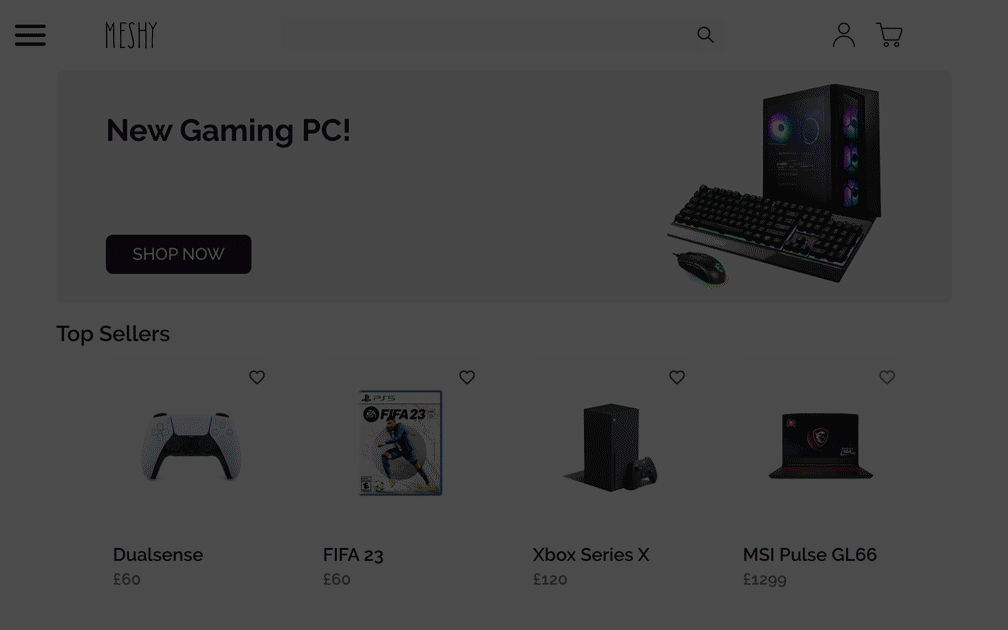
- Progressive customer profiling: Gradually gather more information about these customers as they interact with your website and app. This helps you segment them more effectively for future behavioural targeting.
9. Discount Seekers
Discount seekers, also called bargain hunters, are opportunistic customers who are always looking for a good deal.
Characteristics of Discount Seekers
- Price sensitive: Discount seekers prioritise getting the best possible price for their purchases above all else.
- Constant deal hunting: They actively search for promotions, coupons, and discounts, both online and offline, to save money on their purchases.
- Low levels of loyalty: They are willing to switch brands or stores to secure a better deal, making them relatively less loyal to any one brand.
How to Best Target and Convert Discount Seekers
- Subscription discounts: Offer subscription services with a discounted rate for recurring purchases. This not only appeals to their budget-conscious nature but also fosters loyalty.
- Social proof: Display reviews, ratings, and testimonials from satisfied customers who found value in your discounted products. This can boost their confidence in your brand.
- Bulk discounts: Provide discounts for bulk purchases or bundles. This strategy can incentivise them to buy more while saving more.
10. Bulk Shoppers
Bulk shoppers are repeat customers who love to buy multiple units of the same product in a single transaction.
Characteristics of Bulk Shoppers
- Volume-oriented: Bulk shoppers prioritise buying products in larger quantities to ensure they have an ample supply on hand.
- Repeat customers: They are repeat customers who regularly return to your store for the same product or a limited selection of items.
- Value-driven: These customers often seek cost savings or convenience in buying in bulk, which can vary from household essentials to items they use frequently.
How to Best Target and Convert Bulk Shoppers
- Bundle deals: Create dynamic bundle deals that combine complementary or related products, encouraging bulk shoppers to explore additional items while saving money.
- Reorder reminders: Send automated reorder reminders based on their purchase frequency to simplify the replenishment process.
- Personalised recommendations: Use their purchase history to recommend related products that complement their bulk purchases.
Harness the Power of Behavioural Segmentation with Segmentify’s Smart Segments
Segmentify’s Smart Segments, a result of extensive experience in personalisation and conversion optimisation, revolutionise how you understand and engage your customer base. Powered by robust AI algorithms, it automatically categorises customers into meaningful segments, enabling you to harness each group’s potential fully.
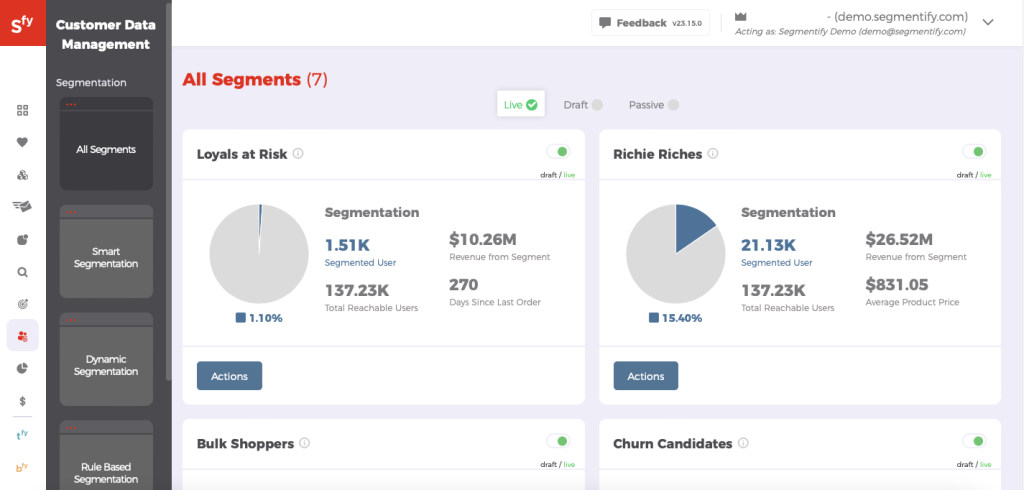
Beyond segmentation, Smart Segments equip you with crucial metrics for every segment, including customer lifetime value (LTV), risk rate, activity ratio, and next order probability.
Armed with this invaluable data, you can craft tailored campaigns that resonate with each customer segment’s unique characteristics and preferences, all while focusing on repeat purchases to bolster customer lifetime value and strengthen your brand’s market presence.
Understanding the nuances between valuable and less valuable customer types empowers you to deliver a brand experience that not only satisfies but also captivates, resulting in a higher number of repeat purchases.
Get in touch with us to get started on this journey towards higher LTV.


